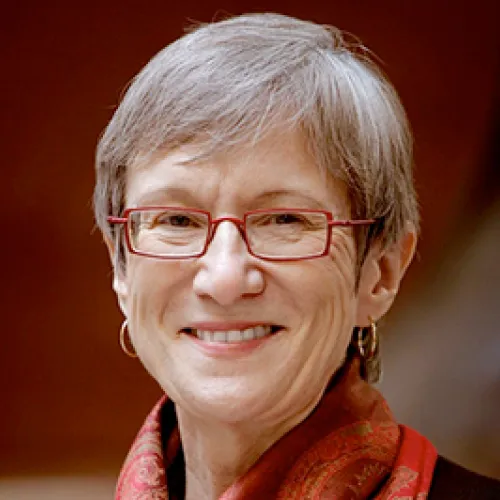Linda Dalrymple Henderson retired from the University of Texas in August 2021 as the David Bruton, Jr. Centennial Professor in Art History Emerita. She earned her PhD at Yale University in 1975 and taught 20th-century art in the Department of Art and Art History from 1978 to 2021. Before joining the University of Texas, she served from 1974 through 1977 as Curator of Modern Art at the Museum of Fine Arts, Houston. Professor Henderson’s research and teaching have centered on modern art and modernism, more generally, in relation to their broader cultural context, including ideas such as “the fourth dimension,” the history of science and technology, and mystical and occult philosophies.
In addition to journal articles and essays, she is the author of The Fourth Dimension and Non-Euclidean Geometry in Modern Art (Princeton University Press, 1983; new, enlarged ed., MIT Press, 2013) and Duchamp in Context: Science and Technology in the Large Glass and Related Works (Princeton, 1998), a first prize winner in the University’s Robert W. Hamilton Author Awards competition in 1999. In 2002 Professor Henderson published the interdisciplinary anthology From Energy to Information: Representation in Science and Technology, Art, and Literature, co-edited with literature scholar Bruce Clarke (Stanford University Press). In 2008 she organized the exhibition Reimagining Space: The Park Place Gallery Group in 1960s New York for UT’s Jack S. Blanton Museum of Art, which recovered the history and art of this innovative group of artists who collaborated in New York from 1962 to 1967.
MIT Press in 2013 published a new edition of Professor Henderson’s 1983 The Fourth Dimension and Non-Euclidean Geometry in Modern Art. This edition features a 100-page “Reintroduction” augmenting the original book’s scientific context as well as expanding its coverage to the period 1950-2000. From topics such as the connections drawn in the late 19th and early 20th-century between a possible fourth dimension and the ether of space, the new text moves forward to trace the gradual resurgence of interest in a spatial fourth dimension in popular culture in the 1950s-1960s, including at the Park Place Gallery. While in the early years of the century, interest in higher spatial dimensions had been crucial for artists from the Cubists and Duchamp to Malevich, the popularization after 1919 of Einstein’s Relativity Theory, redefining the fourth dimension as time, gradually eclipsed wide-scale interest in a spatial fourth dimension. It reemerged with gusto, however, in the context of string theory in physics and computer graphics beginning in the 1980s, and, as a long-time theme in science fiction, it reached new prominence in Christopher Nolan’s 2014 film Interstellar.
Professor Henderson is currently at work on a book titled “Ether and the Energies of Modernism: Art, Science, and Occultism in the Early 20th Century.” This study centers on the “international cultures of science and occultism” that served as a substructure for the development of modern artists in a variety of geographical locales—from Hilma af Klint in Sweden to Kandinsky in Germany, Boccioni in Italy to Malevich in Russia, and the Cubists, Duchamp, and Kupka in Paris. Reestablishing the centrality of the ether and discoveries such as X-rays, radioactivity, and the electron, the book will provide the long-missing backdrop against which early 20th-century artists transformed the representation of matter and space or transcended it completely in totally abstract styles.
A Guggenheim Fellow in 1988-89, Professor Henderson was named to the University’s Academy of Distinguished Teachers in 2000 and received a Regents’ Outstanding Teaching Award in 2009. During late spring-summer 2010 and 2011 she was a Senior Fellow at the IKKM [International Research Institute for Cultural Technologies and Media Philosophy] at the Bauhaus University in Weimar, where she then served as a member of the Board from 2010 to 2016. In spring 2014 she was a Berlin Prize fellow at the American Academy in Berlin, and during fall 2016 she was an Invited Researcher at the Institut National d’Histoire de l’Art in Paris. In 2014 Professor Henderson won the Lifetime Achievement Award, given by the Society for Literature, Science, and the Arts. In 2018 she received a Leonardo Pioneer Award, given by the art/science journal Leonardo on its 50th Anniversary.


